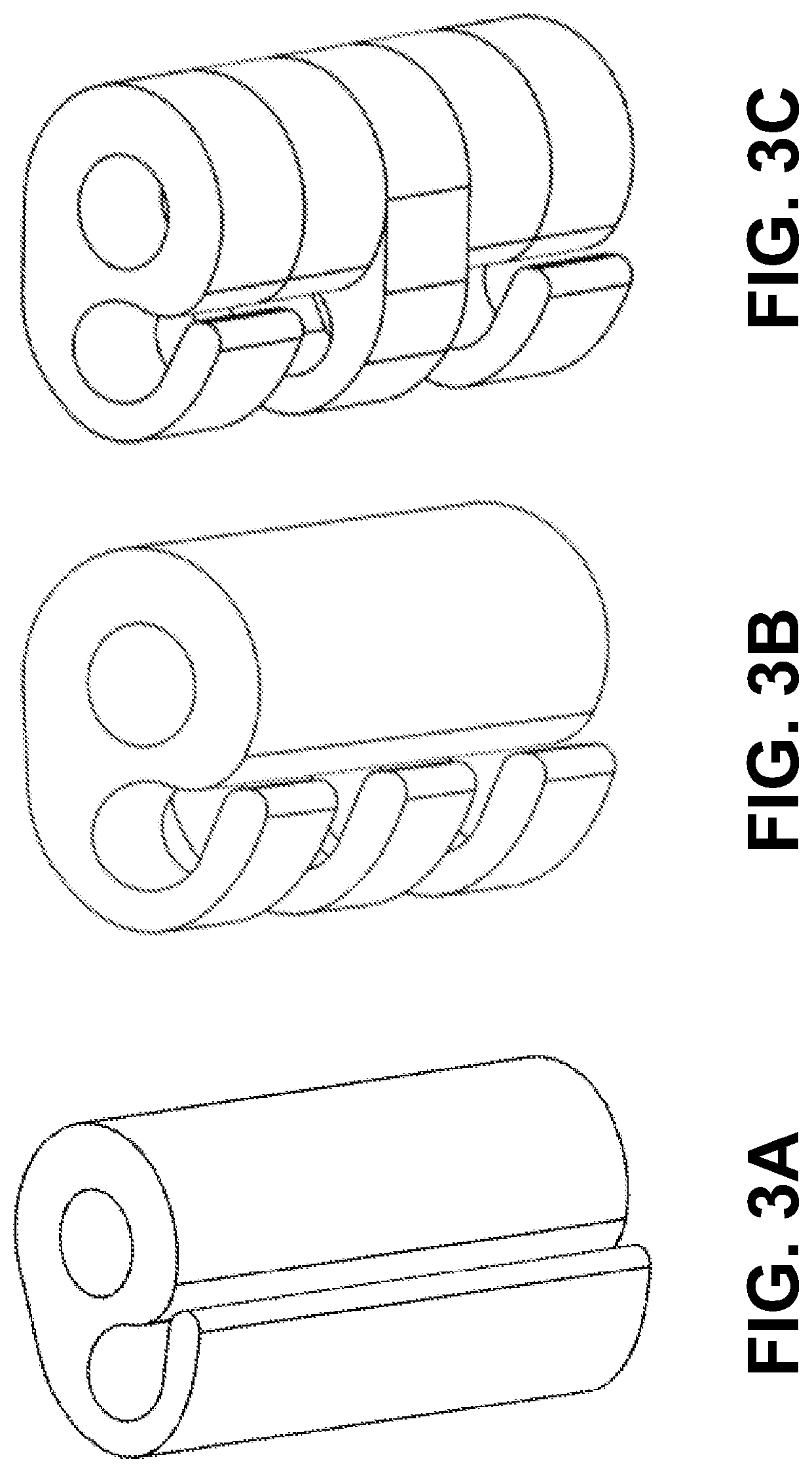Graft for segmental bone defect repair
a segmental bone defect and bone defect technology, applied in the field of bone defect repair devices, can solve the problems of skeletal morbidity at the donor site, mismatch of anatomical shape, and difficulty in repair of large segmental bone defects
- Summary
- Abstract
- Description
- Claims
- Application Information
AI Technical Summary
Benefits of technology
Problems solved by technology
Method used
Image
Examples
Embodiment Construction
[0013]This invention pertains to a graft design for circumventing disadvantages of current clinical use of commercially available osteoinductive growth factors, and optimizing growth factor release for accelerated bone defect repair. The geometry of the device is distinguished by a scaffold section with a central conduit (first conduit), with either one or a series of hook-shaped chamber structures integrated and extending from a lateral side of the scaffold (FIGS. 1A-B, 2A-B and 3A-C). In one embodiment, the scaffold could be a tubular structure or a cylindrical structure. The purpose of the hook structures is to form a compartment or chamber, second conduit, to hold in place the biological augmentation device, such as growth factors (eg, recombinant human bone morphogenetic protein-2 (rhBMP-2) or platelet-derived growth factor BB (PDGF-BB) with carrier such as collagen sponge. In this case, the objective of the side hook is protection, so that during preparation and handling, the ...
PUM
| Property | Measurement | Unit |
|---|---|---|
| porosity | aaaaa | aaaaa |
| temperature | aaaaa | aaaaa |
| thickness | aaaaa | aaaaa |
Abstract
Description
Claims
Application Information
 Login to View More
Login to View More - R&D
- Intellectual Property
- Life Sciences
- Materials
- Tech Scout
- Unparalleled Data Quality
- Higher Quality Content
- 60% Fewer Hallucinations
Browse by: Latest US Patents, China's latest patents, Technical Efficacy Thesaurus, Application Domain, Technology Topic, Popular Technical Reports.
© 2025 PatSnap. All rights reserved.Legal|Privacy policy|Modern Slavery Act Transparency Statement|Sitemap|About US| Contact US: help@patsnap.com



